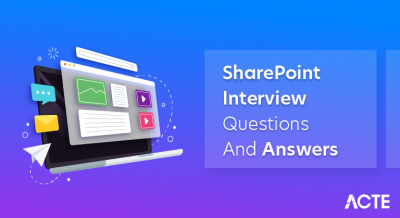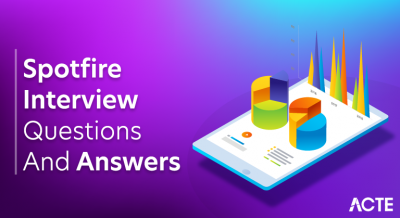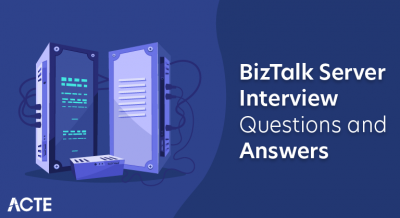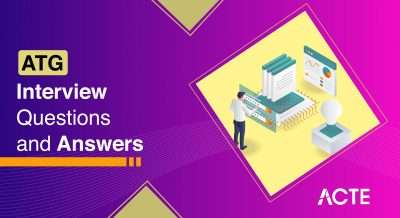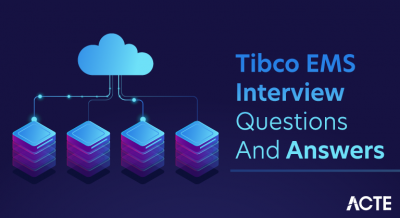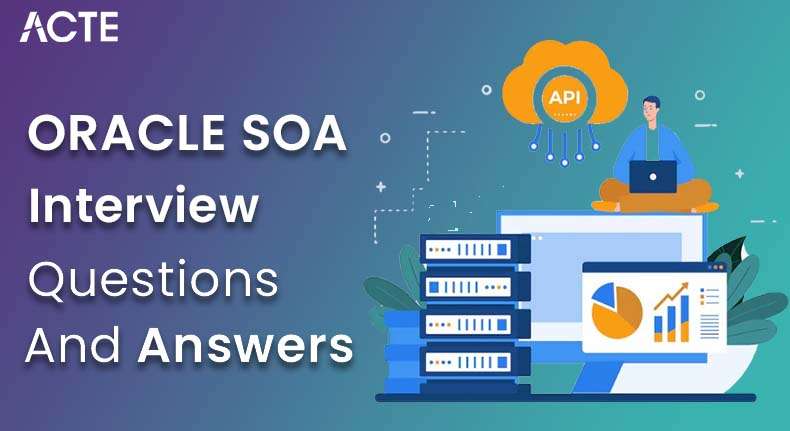
Oracle SOA is a cutting-edge platform facilitating seamless integration of disparate systems and applications within organizations. Leveraging Oracle Fusion Middleware technologies, it empowers businesses to streamline processes, enhance productivity, and drive digital transformation. With its robust architecture and comprehensive suite of tools, Oracle SOA enables efficient communication and collaboration across various domains, ensuring agility and scalability to adapt to changing business requirements.
1. What does SOA mean?
Ans:
SOA, or Service-Oriented Architecture, structures software applications as a collection of loosely coupled, interoperable services. These services are self-contained, reusable, and operate independently. They communicate with each other over a network, enabling flexible and scalable software solutions. This approach enhances modularity and integration in complex systems.
2. What are the key tenets that Service-Oriented Architecture (SOA) is built upon?
Ans:
- SOA is based on several fundamental principles: loose coupling, service reusability, service abstraction, autonomy, and composability.
- These tenets promote flexibility, scalability, and agility in building distributed systems.
- Loose coupling allows services to evolve independently without affecting other components, while service reusability promotes efficiency and consistency in development.
3. Are Oracle Fusion and Oracle SOA considered equivalent?
Ans:
No, Oracle Fusion and Oracle SOA are not equivalent. Oracle Fusion is an ERP suite that integrates various business processes and applications. In contrast, Oracle SOA is a middleware platform designed for developing, deploying, and managing service-oriented applications. While Fusion focuses on business applications, SOA provides the infrastructure for service-oriented architecture.
4. What is SC in the context of the Oracle SOA platform?
Ans:
- It is a programming model used in the Oracle SOA platform for building composite applications from reusable components.
- SCA promotes modularity, reusability, and interoperability by defining standard interfaces and interactions between components.
- Additionally, it supports a range of communication protocols and data formats, enhancing flexibility in integrating diverse systems and services.
5. List a few challenges that arise when using SOA.
Ans:
- Integration complexity: Integrating diverse systems and services can be challenging due to differences in technology, protocols, and data formats.
- Governance and management: Ensuring consistency, security, and compliance across distributed services requires robust governance processes.
- Service identification and discovery: Identifying and discovering available services within an organization’s ecosystem can be complex, especially in large enterprises.
6. Is SOA Governance required to get started?
Ans:
SOA Governance capabilities are crucial for effectively implementing and managing service-oriented architectures. It ensures services are developed, deployed, and used according to established policies and best practices. Governance helps maintain consistency, security, and compliance across distributed services. This approach enhances the overall management and effectiveness of SOA implementations.
7. What is SOA choreography?
Ans:
SOA choreography is a design approach where services interact with each other based on predefined rules and protocols. Unlike orchestration, where a central controller coordinates the flow of interactions, choreography relies on peer-to-peer communication between services. SOA choreography promotes flexibility and autonomy by allowing services to dynamically adapt to changes in the environment or business requirements.
8. Discuss synchronous vs. asynchronous communication in SOA.
Ans:
| Aspect | Synchronous Communication | Asynchronous Communication | |
| Flow of Control |
Client waits for an immediate response before proceeding further. |
Client continues its work without waiting for an immediate response. | |
| Response Time | Immediate response is expected. | Response time might be delayed, as the client doesn’t wait for an immediate response. | |
| Use Cases |
Real-time interactions where immediate responses are necessary. |
Long-running processes, batch processing, event-driven architectures. | |
| Complexity | Generally simpler to implement and reason about. | Can be more complex due to handling message queuing and callbacks. |
9. What distinguishes orchestration from choreography?
Ans:
- Orchestration involves a central controller coordinating the flow of interactions between services to achieve a specific business process.
- Conversely, choreography relies on peer-to-peer communication between services, where each service knows how to interact based on predefined rules and protocols.
- Orchestration is more prescriptive and centralized, while choreography is more flexible and decentralized.
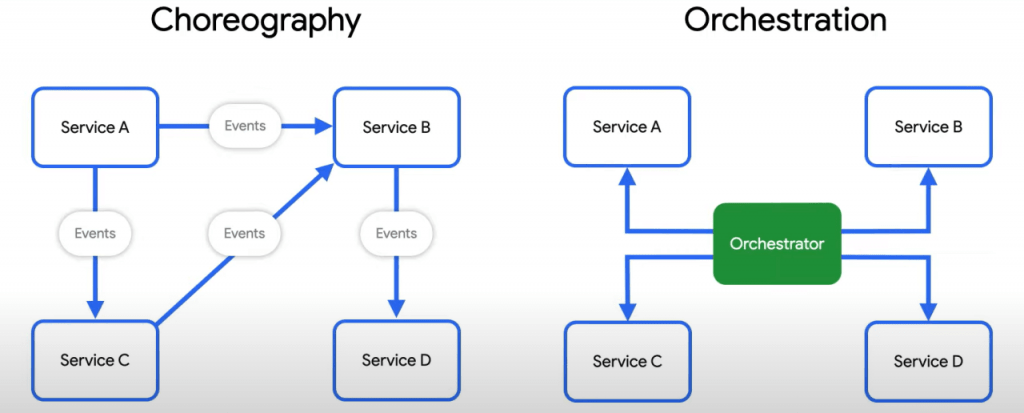
10. What are the different design patterns applied when implementing SOA?
Ans:
Common design patterns in SOA implementations include service gateway, service broker, service registry, service choreography, and service orchestration. These patterns address architectural challenges such as service discovery, composition, security, and reliability. Data mapping patterns also play a crucial role in transforming data between services. Collectively, these patterns offer reusable solutions to enhance SOA effectiveness.
11. How can the transaction-related timeout be extended in SOA?
Ans:
- Extend transaction timeout in SOA via middleware configuration adjustments.
- Modify parameters like transaction timeout values in middleware configuration files.
- Ensures long-running transactions aren’t terminated prematurely.
- Allows complex operations or external interactions to be completed.
- Requires careful monitoring to avoid negative impacts on system stability.
- Testing is crucial to validate extended timeout configurations.
12. How does DVM fit into the process of implementing SOA?
Ans:
- DVM (Domain Value Map) acts as a central repository in SOA.
- Facilitates mapping of values across different systems and applications.
- Provides a standardized approach for data transformations.
- Enhances reusability and maintainability by centralizing data mapping logic.
- Promotes interoperability and agility by abstracting domain-specific details.
- Simplifies data integration and ensures consistency across the SOA landscape.
13. What is a decision service in the context of the SOA environment?
Ans:
Decision service in SOA automates complex business decisions. It encapsulates decision-making logic as a reusable service. It ensures consistent enforcement of business rules across systems. It facilitates agility with quick updates to decision logic. Separating concerns promotes modularity and maintainability. It enhances the efficiency and effectiveness of business processes in SOA.
14. How is MDS related to SOA practices?
Ans:
MDS (Metadata Services) serves as a centralized repository in Oracle SOA. It manages metadata artifacts like configuration files and schema definitions, facilitating consistency and reuse across the SOA landscape. It also enables versioning, lifecycle management, and governance and streamlines development, deployment, and maintenance processes in Oracle SOA.
15. What does Oracle SOA’s singleton functionality entail?
Ans:
- Oracle SOA’s singleton ensures only one instance of a component/service is active.
- Prevents conflicts and maintains data consistency.
- Ideal for managing shared resources or critical operations.
- Configurable and selectively applied to components/services.
- Enhances system reliability, performance, and data integrity.
- A crucial feature in stateful services in Oracle SOA.
16. What are FTP and HA file adapters in terms of SOA?
Ans:
- FTP and HA File adapters integrate with external file-based systems in SOA.
- The FTP adapter communicates with the FTP servers to exchange files.
- HA File adapter ensures high availability and fault tolerance.
- Configurable for various file transfer protocols and security.
- Support asynchronous and batch processing modes.
- Enhance interoperability and flexibility in SOA for file-based interactions.
17. Describe SOA Principles.
Ans:
SOA principles guide the design, development, and implementation of service-oriented architectures. These principles include loose coupling, service reuse, service contract, service abstraction, and service autonomy. They also promote agility, flexibility, and interoperability in enterprise systems. They emphasize modularization, encapsulation, and separation of concerns and foster the creation of scalable, adaptable, and maintainable software systems. Adherence to SOA principles aligns with business goals and fosters collaboration.
18. How can a request be made dynamic?
Ans:
- Dynamic requests in SOA involve parameterizing inputs or attributes.
- Define placeholders or variables for dynamic resolution at runtime.
- Enable flexibility and customization based on context or preferences.
- Support runtime data manipulation and transformation.
- Enhance reusability and extensibility of services in SOA.
- It is crucial for adapting to varying data or conditions dynamically.
19. What is the architecture of microservices?
Ans:
- Microservices architecture comprises loosely coupled, independently deployable services.
- Organized around specific business capabilities.
- Promotes modularity, agility, and resilience.
- Allows teams to work autonomously and innovate rapidly.
- Supports polyglot development for technology diversity.
- Requires decentralized governance and distributed systems design.
20. What is included in SOA architecture?
Ans:
SOA architecture includes services, service consumers, providers, and registries. Services encapsulate business logic with well-defined interfaces. Consumers interact with services for functionality and data. Providers implement and host services for consumption. Registries maintain metadata for dynamic discovery and invocation. Additional components include message brokers, orchestration engines, and security gateways.
21. What is the general concept of SOA implementation?
Ans:
SOA implements interoperable services for business processes. Services are loosely coupled and reusable across applications. It emphasizes agility through service composition. SOA aligns IT with business needs via standardized interfaces. It promotes modular architecture for easier maintenance. SOA fosters collaboration and innovation through a service-oriented culture.
22. What is the role of ESB in SOA implementation?
Ans:
- ESB mediates communication between heterogeneous systems.
- It facilitates seamless service integration and orchestration.
- ESB provides features like message routing and transformation.
- Enhances flexibility by decoupling service consumers and providers.
- Serves as a central hub for managing and monitoring service interactions.
- Enables scalability and agility in SOA implementations.
23. What is the mediator in SOA?
Ans:
Mediators route messages between services in SOA. They facilitate communication and ensure loose coupling. Mediators perform message transformation and validation. They enhance agility through dynamic routing based on content. They are crucial for implementing service orchestration and choreography patterns and play a vital role in service interaction management.
24. What is an XML Schema?
Ans:
- XML Schema defines XML document structure and constraints.
- It validates documents against predefined rules.
- Supports complex data types and namespace declarations.
- Enhances interoperability with a standard schema language.
- Widely used in web services and data interchange.
- Essential for defining data formats in SOA.
25. What are the key benefits of adopting SOA?
Ans:
- Enhances agility and flexibility through service reuse.
- Improves interoperability and aligns IT with business goals.
- Promotes scalability, modularity, and standardized interfaces.
- Fosters a service-oriented culture driving collaboration.
- Supports innovation and accelerates time-to-market.
26. Explain loose coupling in SOA and its significance.
Ans:
Loose coupling allows services to evolve independently, reducing dependencies and enabling updates without disruptions. It enhances flexibility, scalability, and maintainability by promoting service autonomy and dynamic process changes. This approach also facilitates service discovery and composition, crucial for achieving agility and adaptability in SOA. Additionally, it supports efficient integration and management of diverse services across the system.
27. How does service reuse contribute to SOA success?
Ans:
Leveraging existing services reduces redundancy and promotes consistency while saving time and costs. It also improves interoperability and standardization and enhances maintainability through centralized logic. It fosters collaboration, accelerates time-to-market, and supports long-term scalability and innovation. Additionally, it facilitates easier updates and upgrades and ensures robust performance across various applications.
28. Discuss the role of service discovery in SOA.
Ans:
- Enables dynamic access to available services.
- Promotes reuse, versioning, and governance.
- Supports load balancing and failover mechanisms.
- Enhances flexibility and agility in service composition.
- It is crucial to realize the benefits of SOA.
- Facilitates dynamic, loosely coupled architectures.
29. What challenges arise when integrating legacy systems into SOA?
Ans:
- The need for standardized interfaces complicates integration.
- Data consistency and format mismatches may arise.
- Dependencies on outdated technologies pose challenges.
- Ensuring security and compliance can be complex.
- Legacy systems may have performance or scalability issues.
- Overcoming resistance to change is a common challenge.
30. How does SOA facilitate interoperability?
Ans:
Defines services with standardized interfaces and protocols. Enables communication between heterogeneous systems. Supports platform-independent access to services. Facilitates data exchange using standardized formats. Promotes loose coupling for independent service evolution—Fosters seamless integration across diverse applications.
31. Describe the role of service contracts.
Ans:
Define interaction terms between services, including input/output formats, protocols, and behaviour. Require agreement for contract changes to ensure consistency and interoperability. Facilitate loose coupling and service evolution while enabling service reuse and maintaining system integrity. Establish clear communication standards to support effective integration and minimize disruptions. Regularly review and update contracts to adapt to evolving requirements.
32. What factors should be considered when selecting SOA technologies?
Ans:
- Compatibility with existing systems.
- Scalability, performance, and standards support.
- Integration with tools and vendor/community resources.
- Alignment with organizational strategy.
- Consideration of development frameworks.
33. How does SOA support scalability and flexibility?
Ans:
- Enables modular, loosely coupled services.
- Independent scaling for varying workloads.
- Promotes reuse and efficient resource utilization.
- Supports distributed deployment models.
- Enhances flexibility with standards-based protocols.
34. Explain service granularity in SOA.
Ans:
Service granularity in SOA pertains to the scope and detail of services defined within the architecture. Fine-grained services perform specific, narrow tasks, which enhances reusability and flexibility but may increase the complexity of managing service interactions. Coarse-grained services handle broader functions, simplifying management but potentially reducing flexibility. Balancing granularity impacts system design, performance, and maintainability, ensuring services are effectively composed and integrated within the SOA framework.
35. Discuss the importance of service composition for business agility.
Ans:
Orchestrates reusable services for complex processes, enabling rapid adaptation to market changes. Supports dynamic adjustments without code changes and promotes modular design. This approach enhances agility, competitiveness, and customer satisfaction. It also streamlines integration, facilitates innovation, and improves operational efficiency and scalability. Furthermore, it ensures a more responsive and adaptive IT infrastructure.
36. How are security and governance ensured in SOA?
Ans:
- Implements identity and access controls.
- Enforces development and deployment standards.
- Monitors and audits for compliance.
- Implements encryption and secure protocols.
- Establishes governance frameworks.
- Collaborates on policy definition and enforcement.
37. Describe messaging and event-driven architecture in SOA.
Ans:
Facilitates asynchronous service communication and enables responses to events with minimal delay. It enhances decoupling and scalability, supports real-time data processing, and ensures loose coupling. This approach is crucial for building scalable and responsive SOA solutions. Additionally, it improves system resilience and flexibility by allowing services to operate independently and adapt to changing requirements.
38. How does SOA optimize business processes?
Ans:
- Decomposes complex processes into reusable services.
- Orchestrates services for automation and optimization.
- Reduces development time and costs.
- Adapts to changing requirements.
- Fosters agility and competitiveness.
- Enhances efficiency and competitiveness.
39. Discuss the impact of cloud computing on SOA.
Ans:
Provides scalable infrastructure and services, enabling flexible, cost-effective deployments. Offers PaaS and SaaS options that complement SOA. Facilitates rapid prototyping and scaling. Extends capabilities for hybrid and multi-cloud environments. Enhances operational efficiency and supports robust, high-performance applications. Ensures seamless integration across diverse platforms and services. Supports continuous innovation and adaptation to evolving business needs.
40. Explain service versioning and its governance implications.
Ans:
- Allows service evolution while maintaining compatibility.
- Introduces new features without disrupting consumers.
- Defines versioning policies and lifecycle management.
- Enforces governance for consistent application.
- Tracks dependencies and communicates changes.
- Promotes stability, interoperability, and trust.
41. How does SOA drive business agility and innovation?
Ans:
- SOA facilitates rapid adaptation to changing business needs through modular and reusable services.
- It encourages innovation by promoting interoperability and the development of new services.
- Companies can assemble and deploy solutions quickly, accelerating time-to-market.
- Dynamic service composition enables agility in responding to market demands.
- Experimentation and continuous improvement are fostered, driving innovation through iterative development cycles.
42. Discuss managing services in SOA.
Ans:
Service management encompasses discovery, provisioning, monitoring, and lifecycle management. Centralized registries and repositories govern and catalog services within the SOA environment. Effective management ensures service availability, reliability, and performance. Automation tools streamline tasks, enhancing efficiency and reducing operational overhead.
43. What role does API management play in extending SOA?
Ans:
- API management abstracts services, facilitating integration and consumption by external parties.
- APIs expose service functionalities in a standardized and controlled manner, promoting interoperability.
- API gateways enforce security policies, access controls, and rate limiting.
- Analytics and monitoring track API usage, performance, and reliability.
- Developer portals facilitate collaboration and adoption by external developers.
- API management fosters ecosystem growth and innovation through third-party integrations.
44. Explain service orchestration’s role.
Ans:
- Service orchestration coordinates multiple services to execute a specific business process.
- It manages the sequence and dependencies of service invocations.
- Orchestration enables complex business logic execution across distributed systems.
- Design tools cater to both business users and developers.
- Dynamic adaptation to changing business requirements enhances agility.
45. How is high availability ensured in SOA?
Ans:
Redundancy and fault tolerance mechanisms are crucial for high availability in SOA architecture. Load balancing distributes requests to prevent overload and maintain performance. Failover mechanisms redirect traffic from failed services to healthy instances. Clustering and replication offer redundancy and enhance resilience. These strategies collectively ensure consistent service availability and reliability.
46. Asynchronous communication allows decoupled interactions without waiting for responses.
Ans:
- Synchronous is suitable for real-time interactions with low latency requirements.
- Asynchronous is preferred for long-running processes or unpredictable response times.
- Messaging patterns like publish-subscribe enable reliable communication in distributed systems.
- Both modes cater to different use cases in SOA based on performance and application requirements.
47. How does SOA integrate with IoT?
Ans:
SOA provides a flexible architecture for integrating IoT devices into enterprise ecosystems. IoT devices expose functionalities as services for seamless integration with other applications. Standards ensure interoperability and compatibility between diverse IoT platforms. Service-oriented platforms manage and orchestrate IoT services effectively. Real-time data processing and analysis enable use cases like predictive maintenance.
48. Explain service virtualization’s benefits in SOA testing.
Ans:
- Service virtualization simulates dependent services’ behavior during testing.
- Realistic scenarios, including edge cases, are tested without disrupting production environments.
- Testing cycles accelerate by removing bottlenecks associated with unavailable dependencies.
- Improved test coverage includes interactions with challenging-to-access services.
- Parallel development and testing are facilitated by providing isolated environments.
49. Describe managing service artifacts in SOA.
Ans:
Service artifact management includes creating, versioning, deploying, and governing service-related assets. Registries and repositories centralize and catalog service artifacts, promoting easy discovery and reuse. Version control ensures traceability and collaboration among development teams. Governance defines standards and policies, ensuring consistency and compliance.
50. Discuss microservices’ impact on SOA.
Ans:
Microservices provide a modern approach to SOA by focusing on small, autonomous, and scalable services. They break down monolithic applications, enhancing flexibility, agility, and resilience. Teams can independently develop, deploy, and evolve each service, fostering innovation. Polyglot development allows the use of diverse technologies suited to each service. This approach also simplifies the scaling and maintenance of complex systems.
51. How does event-driven architecture complement SOA?
Ans:
- Event-driven architecture enhances SOA by enabling real-time communication between services.
- It allows services to react to events asynchronously, promoting agility and responsiveness.
- Event-driven patterns facilitate loose coupling, scalability, and flexibility in SOA implementations.
- By decoupling components, event-driven architecture improves system resilience and fault tolerance.
- It enables seamless integration with event sources like IoT devices, ensuring timely data processing.
52. Explain service choreography’s advantages.
Ans:
Service choreography allows services to interact autonomously based on predefined rules and events. It promotes flexibility and decentralization as services collaborate without a central controller. Choreography simplifies complex workflows by distributing responsibilities across services. It enhances scalability and resilience by minimizing dependencies and bottlenecks.
53. Discuss the API gateway’s role in securing SOA.
Ans:
- An API gateway is a single entry point for clients to access services in an SOA.
- It enforces security policies, such as authentication, authorization, and encryption, to protect services.
- API gateways provide threat protection by filtering malicious requests and preventing attacks.
- They enable fine-grained access control, allowing administrators to define access rules based on roles and permissions.
- API gateways facilitate traffic management and monitoring, ensuring performance and compliance.
54. How does SOA support enterprise data integration?
Ans:
- SOA enables seamless integration of disparate data sources and applications within an enterprise.
- It provides standardized communication protocols and data formats for exchanging information.
- SOA’s service-oriented approach allows data to be accessed and manipulated as reusable services.
- It facilitates data mediation and transformation, ensuring compatibility between heterogeneous systems.
- SOA promotes data consistency and integrity through centralized service governance and management.
55. Describe service registries in SOA.
Ans:
Service registries are centralized repositories that store metadata and descriptions of available services. They enable service discovery by providing a catalog of available services within an SOA environment. Service registries facilitate dynamic service invocation and promote service reuse and composition. They store service endpoints, contracts, and policies, allowing clients to locate and interact with services programmatically.
56. Explain SOA analysis and design (SOAD).
Ans:
SOA analysis and design involve identifying business processes and requirements and mapping them to service-oriented solutions. They encompass defining service boundaries, interfaces, and contracts based on business capabilities. SOAD involves designing service compositions, choreography, or orchestration to meet business objectives. During the design phase, they consider factors like service granularity, scalability, and maintainability.
57. How is scalability ensured in SOA deployments?
Ans:
- SOA promotes scalability through service reuse, loose coupling, and distributed architecture.
- Horizontal scaling is achieved by deploying multiple service instances across distributed environments.
- SOA architectures leverage load balancing and clustering techniques to distribute incoming requests evenly.
- Cloud-based deployments offer elasticity, allowing resources to scale up or down based on demand.
- Scalability is facilitated through asynchronous messaging patterns, enabling services to handle peak loads efficiently.
58. Discuss monitoring and managing SOA challenges.
Ans:
- Monitoring SOA involves tracking real-time service performance, availability, and usage metrics.
- Challenges include correlating distributed service logs and events to diagnose issues accurately.
- Managing SOA environments requires robust governance frameworks to ensure service quality and compliance.
- Change management processes must be in place to handle updates, versioning, and service lifecycle management.
- SOA governance tools help enforce policies, standards, and regulatory requirements across the service lifecycle.
59. Explain business process automation in SOA.
Ans:
SOA enables business process automation by encapsulating business logic into reusable services. It facilitates the orchestration or choreography of services to automate end-to-end business processes. Business process engines execute workflows defined using BPMN (Business Process Model and Notation) standards. SOA supports workflow automation, task routing, and decision management to streamline business operations.
60. How does SOA handle distributed transactions?
Ans:
- SOA supports distributed transactions by leveraging protocols like WS-AtomicTransaction or WS-BusinessActivity.
- Two-phase commit (2PC) protocols ensure atomicity and consistency across participating services.
- Compensation mechanisms are employed to handle transactional failures and maintain data integrity.
- Choreography or orchestration engines coordinate distributed transactions and enforce transactional boundaries.
61. Describe service level agreements (SLAs) in SOA.
Ans:
SLAs in SOA define performance metrics and service guarantees, setting expectations for availability, response time, and reliability. They ensure accountability between service providers and consumers. Monitoring tools track adherence, triggering alerts for deviations. SLAs adapt to changing business needs and service-level requirements. Regular reviews and updates of SLAs are essential for maintaining service quality and aligning with evolving objectives.
62. Discuss containerization and Kubernetes in SOA.
Ans:
- Containerization enables packaging applications and dependencies into lightweight, portable units.
- Kubernetes orchestrates containerized services, automating deployment, scaling, and management.
- SOA benefits from containerization’s agility and consistency across environments.
- Kubernetes enhances SOA scalability and resilience with dynamic resource allocation.
- Containerized microservices in SOA simplify development, deployment, and scaling.
63. How does SOA integrate with external services?
Ans:
- SOA integrates with external services via service interfaces and APIs.
- Standards like SOAP and REST facilitate communication and data exchange.
- ESBs and API gateways mediate interactions between internal and external services.
- Adapters and connectors facilitate seamless integration with diverse systems and protocols.
- API management platforms enforce external services’ security, governance, and access control.
64. Explain service-oriented infrastructure (SOI) in SOA.
Ans:
SOI comprises the foundational infrastructure supporting SOA principles and practices. It includes middleware, messaging systems, service registries, and governance tools. SOI facilitates service discovery, composition, invocation, and management and provides the runtime environment for deploying and executing services. SOI components ensure the scalability, reliability, security, and performance of SOA implementations.
65. How does service discovery function in SOA?
Ans:
Service discovery enables locating and accessing services within an SOA. Service registries or repositories catalog available services and their metadata. Discovery mechanisms include UDDI, DNS-based discovery, and API gateways. Consumers query registries to find suitable services based on criteria like functionality and quality. Dynamic discovery supports runtime binding and adaptation to changing service landscapes.
66. Explain the significance of loose coupling in SOA.
Ans:
Loose coupling decouples service consumers and providers, promoting flexibility and autonomy. Services communicate via standardized interfaces, abstracting implementation details. Loose coupling enables service composition, evolution, and substitution without impacting consumers. It fosters service reuse and interoperability across heterogeneous systems.
67. Discuss the role of service contracts in SOA.
Ans:
- Service contracts define the terms, responsibilities, and expectations between service providers and consumers.
- They specify service interfaces, operations, data formats, and quality attributes.
- Service contracts enforce service-level agreements (SLAs) and compliance with governance policies.
- Contracts promote interoperability by establishing a common understanding between parties.
68. Describe the benefits of service reuse in SOA.
Ans:
Service reuse promotes efficiency by avoiding redundant development efforts. It enhances consistency and standardization across applications and processes. Reusable services enable faster time-to-market for new solutions. Organizations can achieve cost savings by leveraging existing services. Service reuse fosters agility by facilitating rapid adaptation to changing business needs.
69. How can security and governance be ensured in SOA?
Ans:
- Security in SOA is ensured through authentication, authorization, and encryption.
- Governance involves defining policies, standards, and processes to manage services effectively.
- Implementing access controls and auditing mechanisms helps enforce security and compliance.
- Service registries and repositories facilitate governance by providing centralized management of services.
70. Discuss messaging’s role in SOA.
Ans:
- Messaging facilitates asynchronous communication between services in SOA.
- It decouples service interactions, promoting loose coupling and flexibility.
- Messaging enables reliable and scalable communication patterns such as publish-subscribe and point-to-point.
- Message brokers and middleware provide routing, transformation, and delivery assurance capabilities.
- Messaging supports integration with heterogeneous systems and technologies.
71. Explain cloud computing’s impact on SOA.
Ans:
Cloud computing provides scalable and on-demand resources for SOA implementations. It enables the deployment of SOA services in cloud environments, fostering agility and cost-effectiveness. Cloud-based services and platforms offer new service discovery, composition, and integration opportunities. Integration with cloud services enhances SOA’s capabilities for scalability, resilience, and geographic distribution.
72. How does service versioning affect SOA governance?
Ans:
- Service versioning involves managing changes to service interfaces and implementations over time.
- Effective versioning practices are essential for maintaining backward compatibility and service evolution.
- Versioning impacts SOA governance by requiring policies and processes for managing backward compatibility, deprecation, and retirement.
- Service registries and repositories are crucial in tracking and managing service versions.
73. Discuss service composition’s role in business agility.
Ans:
- Service composition enables the assembly of reusable services into flexible and adaptable business processes.
- It supports dynamic process orchestration and choreography, allowing rapid adjustments to changing business requirements.
- Service composition promotes agility by facilitating the reuse and combination of existing services to create new functionalities.
- Composite services abstract underlying complexities, allowing businesses to focus on higher-level objectives and innovations.
74. Describe API management’s role in extending SOA.
Ans:
API management governs the exposure, consumption, and lifecycle management of APIs in SOA environments. It provides capabilities for securing, monitoring, and controlling access to services and APIs. API management platforms offer authentication, authorization, rate limiting, and analytics features. Centralized API management simplifies the integration of services with external partners, customers, and developers.
75. How does SOA integrate with IoT devices?
Ans:
- SOA integrates with IoT devices by exposing their functionalities as services accessible over the network.
- IoT devices can act as service providers, offering data streams, control capabilities, or sensor readings.
- Service-oriented architectures provide a standardized approach for interacting with diverse IoT devices, regardless of their underlying technologies.
- Integration middleware or IoT platforms often mediate communication between IoT devices and enterprise systems.
76. Describe service repositories in managing service artifacts.
Ans:
Service repositories are centralized repositories that store service artifacts such as WSDL files, schemas, policies, and documentation. They provide a single source of truth for discovering, accessing, and managing services within an SOA. Service repositories facilitate service reuse by cataloging available services and their capabilities. They support versioning and governance of services, ensuring consistency and compliance with organizational standards.
77. Explain service-oriented infrastructure’s role in SOA.
Ans:
Service-oriented infrastructure forms the foundation of SOA environments. It comprises components like service buses and registries. Infrastructure facilitates service discovery and communication. It supports principles like loose coupling and interoperability. Infrastructure ensures scalability, reliability, and performance. By abstracting complexities, it simplifies application development and maintenance.
78. How do components and services differ fundamentally from one another?
Ans:
- Components are software modules that encapsulate functionality and can be reused within an application or system.
- Services, in contrast, are self-contained units of functionality that are exposed over a network and can be invoked independently by other applications or services.
- While components are typically tightly coupled within a single application, services are designed for loose coupling and interoperability across distributed systems.
79. What is Oracle SOA and how does it differ from traditional middleware solutions?
Ans:
- Oracle SOA (Service-Oriented Architecture) is a comprehensive suite for building, deploying, and managing enterprise applications.
- Unlike traditional middleware, SOA emphasizes loose coupling, reusability, and interoperability.
- It enables businesses to integrate disparate systems and applications using standardized interfaces and protocols, facilitating agility and flexibility in adapting to changing business needs.
80. What are the key components of Oracle SOA Suite?
Ans:
Oracle SOA Suite comprises various components such as Oracle BPEL Process Manager, Oracle Service Bus, Oracle Business Rules, Oracle Human Workflow, Oracle Mediator, and more. These components provide capabilities for service orchestration, message routing, business rule enforcement, human-centric workflow management, and mediation, enabling comprehensive integration and process automation solutions.
81. What are the benefits of Oracle SOA for integration over other middleware?
Ans:
Oracle SOA offers benefits like enhanced agility, reusability of services, improved visibility and monitoring, and standardized integration through adherence to industry standards like XML, SOAP, and REST. Its comprehensive suite provides tools for designing, deploying, and managing integrations, reducing development time and costs while increasing scalability and reliability.
82. What role does Oracle Service Bus (OSB) play in Oracle SOA architecture?
Ans:
- Oracle Service Bus (OSB) acts as a message broker and mediation engine in Oracle SOA architecture.
- It enables seamless communication between heterogeneous systems by abstracting service endpoints, routing messages, applying transformations, and enforcing policies.
- OSB facilitates the creation of flexible, decoupled integrations while providing features for monitoring, security, and reliability.
83. How does Oracle SOA enable SOA principles implementation?
Ans:
- Oracle SOA enables the implementation of SOA principles by promoting service reuse, encapsulation of business logic into modular services, and orchestrating these services to fulfill business processes.
- It fosters loose coupling between services, allowing them to evolve independently, and provides tools for service discovery, composition, and governance, ensuring alignment with business objectives.
84. How does Human Workflow in Oracle SOA enhance BPM?
Ans:
Human Workflow in Oracle SOA enhances Business Process Management (BPM) by integrating human tasks into automated processes. It supports modelling, routing, and tracking of human-centric activities. This integration streamlines collaboration, boosts productivity, and ensures compliance with business rules and policies. It enables organizations to manage human tasks within their workflows efficiently.
85. How does Oracle SOA Suite manage services and processes?
Ans:
Oracle SOA Suite manages services and processes through its comprehensive set of tools for design, development, deployment, and monitoring. It provides a centralized platform for service governance, versioning, and lifecycle management, ensuring service reliability, scalability, and security. Additionally, it offers monitoring and analytics capabilities for tracking service usage, performance, and compliance.
86. How does Oracle SOA handle errors and ensure fault tolerance in SOA?
Ans:
- Oracle SOA employs fault policies to handle errors, allowing for customized error handling logic.
- It utilizes fault binding components to catch and handle faults at various stages of the process.
- Automatic retries and compensation mechanisms are built-in features to ensure fault tolerance.
- Clustering and load balancing capabilities further enhance system resilience against failures.
- Comprehensive monitoring and reporting tools help in identifying and resolving issues promptly.
87. How do Oracle SOA security features ensure data protection and compliance?
Ans:
- Oracle SOA offers comprehensive security features such as authentication, authorization, and encryption.
- Integration with identity management systems allows for centralized user management and access control.
- Fine-grained security policies enable administrators to enforce data protection and compliance regulations.
- Role-based access control ensures that users have appropriate permissions for accessing services and data.
- Secure communication protocols such as SSL/TLS are supported for safeguarding data in transit.
88. What are some best practices for designing and implementing Oracle SOA solutions?
Ans:
- Follow service-oriented architecture principles to design modular and reusable services.
- Use design patterns like Service Façade, Service Layer, and Data Access Object for better architecture.
- Employ loose coupling and high cohesion to promote scalability and maintainability.
- Implement error handling and logging mechanisms to ensure robustness and traceability.
- Utilize Oracle SOA Suite features like Oracle BPEL Process Manager and Oracle Service Bus effectively.
89. How does Oracle SOA support cloud integration and hybrid deployment models?
Ans:
Oracle SOA provides adapters and connectors for seamless integration with various cloud services and applications. It offers hybrid integration capabilities, allowing businesses to integrate on-premises systems with cloud-based services. Support for standards like REST, SOAP, and messaging protocols facilitates interoperability in hybrid environments. Oracle Integration Cloud extends SOA capabilities for cloud-native integration scenarios. Cloud adapters simplify connectivity with popular cloud platforms like Salesforce, Oracle Cloud, and AWS.
90. Explain Oracle SOA application deployment and management in production.
Ans:
Oracle SOA applications are typically deployed to Oracle WebLogic Server, a robust application server platform. Deployment involves packaging services and composites into deployable units like SAR files. Oracle Enterprise Manager provides comprehensive tools for deploying and managing SOA applications in production. It offers features for monitoring performance, managing configurations, and diagnosing issues in real-time. Configuration management capabilities allow for seamless updates and versioning of SOA artifacts.


